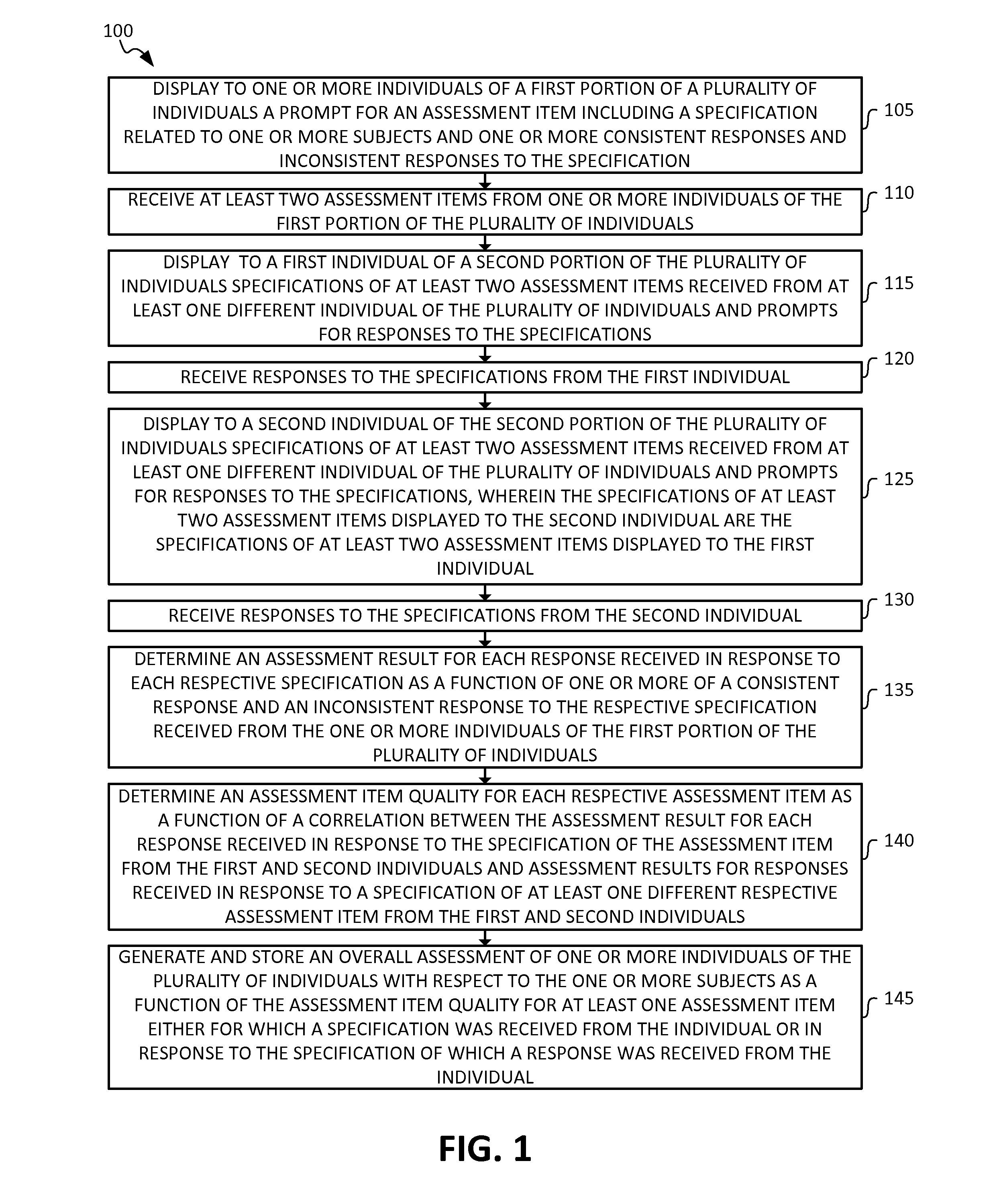Systems, Methods, and Software for Enabling Automated, Interactive Assessment
a technology of automated assessment and interactive assessment, applied in the field of education, can solve the problems of time-consuming, difficult to meet difficulty in meeting the needs of students, so as to increase the learning efficiency of students, reduce the time of instructors, and increase the learning of other students.
- Summary
- Abstract
- Description
- Claims
- Application Information
AI Technical Summary
Benefits of technology
Problems solved by technology
Method used
Image
Examples
example implementation
6.1 Example Implementation
[0142]In the following example implementation, the right “improvement-finalize” cycles from FIG. 4 are focused on and the two respective steps are referred to as “creating artifacts” and “selecting between different artifacts” (newly depicted in FIG. 5). The necessary bootstrapping can come from any provided ground truth for any entries of the student scores (e.g., by identifying an individual to be a trusted individual like a TA) or by providing any weights between different learning artifacts (e.g., by identifying correct or subtly incorrect artifacts and adjusting their respective weights accordingly). In particular, FIG. 5 shows an example of a calculation of student assessment scores s by combining a “create” learning cycle with a “select” learning cycle: knowing w allows for calculation of s and vice versa. Additionally, knowing any entry of the displayed vector or tensor scores (s, sc, ss, w) with higher certainty allows for propagation of this seed ...
PUM
 Login to View More
Login to View More Abstract
Description
Claims
Application Information
 Login to View More
Login to View More - R&D
- Intellectual Property
- Life Sciences
- Materials
- Tech Scout
- Unparalleled Data Quality
- Higher Quality Content
- 60% Fewer Hallucinations
Browse by: Latest US Patents, China's latest patents, Technical Efficacy Thesaurus, Application Domain, Technology Topic, Popular Technical Reports.
© 2025 PatSnap. All rights reserved.Legal|Privacy policy|Modern Slavery Act Transparency Statement|Sitemap|About US| Contact US: help@patsnap.com



